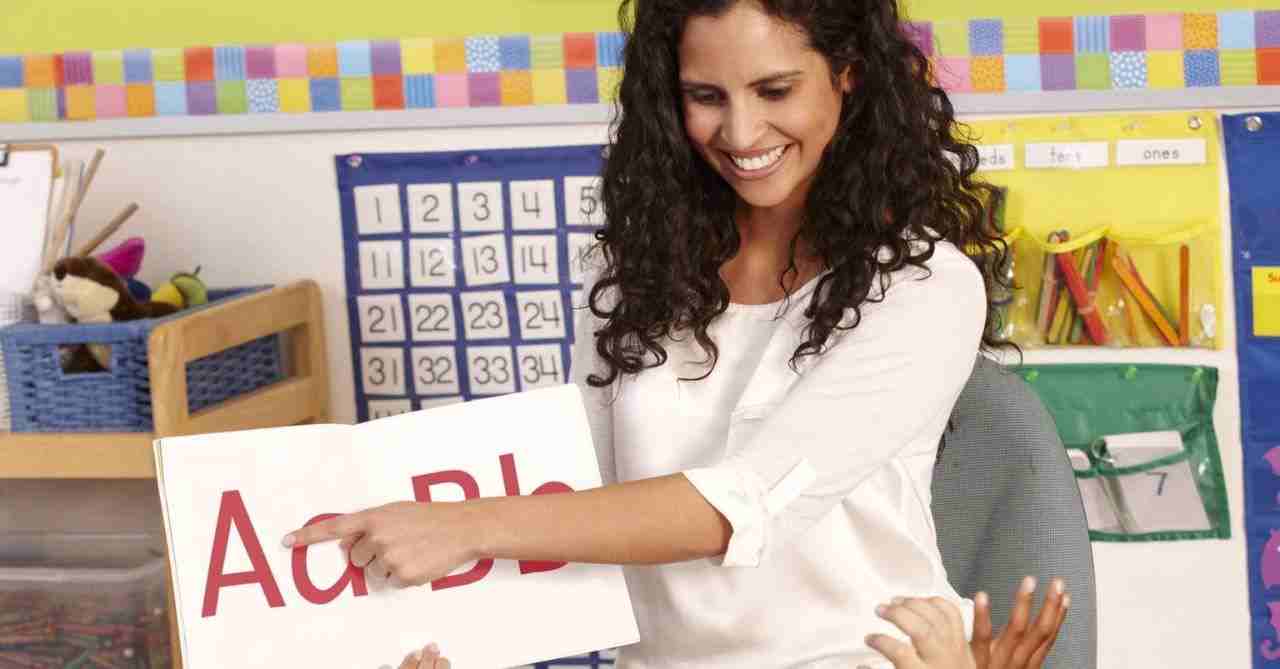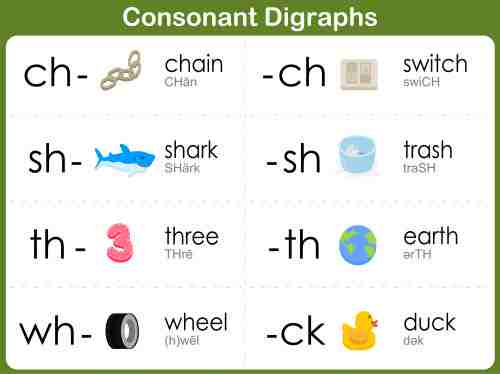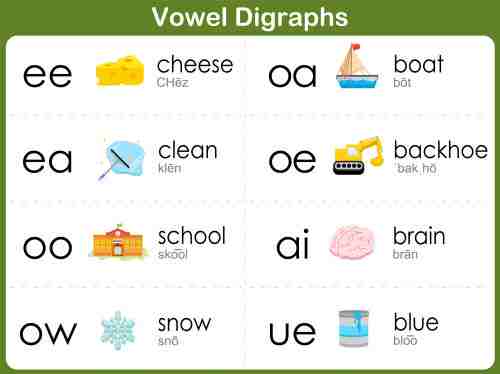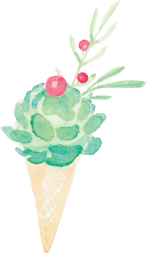这份自然拼读课堂用语,请英语老师们收好


实用高效的美式英语教学方法
原汁原味的美式英语小学课堂
自然拼读教学中常用的术语
文:芬芳
前段时间,一位老师告诉我,在教孩子自然拼读的时候, 她和他们机构的老师都不知道怎么样用专业的词汇去表达,所以只靠自己自成一派的翻译,而大家的翻译却各不相同。
她举例说,有位老师上课时讲到rake,lame,made这类词时,就问学生:Can you find letter combination in this word? 学生的回答是:a consonant e. 她觉得回答的不对,就问我,是不是该引导孩子回答:long A final e.
我想这个问题,可能是普遍存在的。咱们自己在小时候学英语的时候,绝大部分人学得都是国际音标,现在来做英语老师给孩子们讲自然拼读的时候,可能很多人的知识储备还不够,同时因为课时紧教学繁重,没有时间专门去从零开始认真学原版教学法书籍,导致很多专业术语并不能用英语准确表达出来。
但是作为一个对自己有高标准严要求的老师来说,要给孩子们一杯水,自己得有一桶水。所以,坚持学习,努力提高自己的老师,是孩子们的好榜样。
我在《Phonics IQ? 敢不敢来测测你的“自然拼读智商”》一文中,我借助14道小题对自然拼读概念进行了简单地梳理,其中解释了一些专有名词的概念,比如digraph, consonant blend, shwa, diphthong,这些词汇如果掌握了,正确地运用于课堂用语中,会使得教学更准确。
下面我再把自然拼读中的基本概念用简单的英文梳理一下,帮助老师们更好地运用于自己的自然拼读课堂。
自然拼读术语
Consonant
Consonant: There are 21 consonant letters.
英语字母有26个,除去a,e,i,o,u,共有21个辅音字母。
Digraph
Digraph: a digraph is a two-letter combination that represents a single speech sound. For example, in the word chair, ch is a digraph.
注意,digraph是指两个字母组合在一起代表一个发音。要注意与下面的consonant cluster进行严格区分。

Consonant cluster
Consonant cluster: a consonant cluster is composed of two or more consonants that blend together when sounded to form a consonant blend. For example, bl in black, spl in splash.
你可能会看到这样两个术语 consonant cluster和consonant blends,严格意义上来说,两者还是有区别的,consonant cluster就是指辅音字母组合在一起,consonant blends不仅指辅音字母组合在一起,还表示组合在一起的发音。一般情况下,两个术语是通用的。

Vowel
Vowels: the letters a, e, i, o, u and sometimes y are classified as vowels.
Short vowel sounds: 比如apple中a的发音,bed中e的发音,big中i的发音,got中o的发音,umbrella中u的发音。有时你会看到用短音符号来表达short vowel sounds.
Long vowel sounds:比如bake,bee,bike, hope, tube中a,e,i,o,u的发音

Vowel Digraph:是指两个元音字母组合在一起,表示一个发音。比如food中的oo. 常见的long vowel digraph主要有ai, ea, ee, oa, ay.

Dipthong
Diphthong 就是咱们通常理解的双元音,定义是A diphthong is a single-vowel phoneme, represented by two letters, resembling a glide from one sound to another. 比如单词boil中的oi, enjoy中的oy,就是diphthong

CVC words
我们经常说的CVC words是一类词,就是consonant+vowel+consonant,符合这一类型的词,所以更准确地说是CVC pattern.
因此回到开头那位老师提的问题,那位老师针对“rake, lame, made”这一类词提问学生:“Can you find letter combination in this word?”是不准确的,这并不是在找字母组合,而是要提炼出CVCe pattern (即Consonant+vowel+consonant+final e/silent e)
所以更好地提问方式可以是:
Do you notice a pattern of these words?
What's the pattern of these words?
再引导孩子说出来:consonant+long a +consonant+final e/silent e
以上是自然拼读中的一些重要基本术语。在孩子学习自然拼读前,美国老师都会培养孩子的音素意识,训练孩子的音素技能,包括:
- 音素的切割(segment)
- 音素添加(phoneme addition)
- 音素删减(phoneme deletion)
- 音素替换(phoneme substitution)
训练音素意识的课堂用语
音素切割
- Say the last sound in /red/
- Say the first sound in /cat/
- What sound do you hear in the middle of rock?
- Pin begins with the sound/p/, the middle sound is____, the ending sound is ______
音素添加
- Add /m/ to /an/, the new word is______
- Start with the word bike, add /s/ to the end. What is the new word.
- What word do you make when you add /s/ to /it/?
音素删减
- Say /fat/, now say it again without the /f/. The new word is _____
- What is left when we take the /s/ from stop?
- Say /seat/. Now say it without the /s/, what is the new word?
音素替换
- Say /can/, say it again, but this time say /m/ instead of /c/. The new word is ____
- Say /pan/, change /a/ to /i/, what is the new word?
- Begin with /fan/. Change /n/ to /t/. What is the new word?
最后给大家献上一段美国老师在K年级课堂上的一段课堂实录,是针对语音意识和音素意识教学的内容。
美国小学课堂实录
欢迎收听


首先是押韵词教学
Teacher: if the word rhymes, give me a quiet thumb up. If the word doesn't rhyme, give me a quiet thumb down. Right in front. Are you ready?
(老师的要求:如果两个词押韵,就在你的胸前竖起你的大拇指。如果不押韵,就把大拇指朝下。)
Teacher:Play ,stay.
Kids: play, stay (同时thumb up,表示押韵)
Teacher: yup, that rhymes. Ready? Chair, me.
Kids: chair, me (同时thumb down,表示不押韵)
Teacher: that's a no. okay. Wet, net.
Kids: wet, net (同时thumb up,表示押韵)
接下来是单词首音
Teacher: alright, beginning sounds! Ready?
Teacher: say me. Beginning sound?
Kids: /m/
Teacher: good. Say pale. Beginning sound?
Kids: /p/
Teacher: say name. beginning sound?
Kids: /n/
Teacher: say top. Beginning sound?
Kids: /t/
下面是把音拼成单词
Teacher: alright. Let's blend sounds together to make a word, ready?
Teacher: /b/ /e/ Be!
/s/ /e/ see!
/f/ /e/ fee!
/k/ /e/ key!
/m/ /e/ me!
Good job everybody.
在进行上面这个练习时,老师用了这样的手势来帮助孩子blend sounds: 说第一个音时伸出左手,说第二音时伸出右手,当把两个音拼成一个单词时,两手一拍击掌。
接下来是音素切割,找出中间音(middle sound)
Alright, we're gonna rollercoaster some words to find the middle sound. Are you ready?
(rollercoaster是过山车的意思,这里,老师要孩子们运用过山车的手势来切割出单词的中间音。)
Can. Middle sound?
/c/ /a/ /n/
(手势是模仿过山车,右手手掌微微弯曲,手指尖表示过山车的头部,/c/音时手在身体右下位置,/a/音时手就是过山车,冲到最高处,身体胸部位置,/n/音是滑落到身体左下位置。)
Net: /n/ /e/ /t/. Middle sound?
Jump: /j/ /u/ /mp/ middle sound?
I heard it over there. Good job!
下面仍然是音素切割的练习
I'm gonna say a word, you're gonna take it apart. You're gonna give me the first sound, and then the rest of it. Right?
No: /n/ /o/ no!
Low: /l/ /o/ low
Go: /g/ /o/ go!
So: /s/ /o/ so!
Good job.
最后是音素添加和音素替换的练习。
Teacher: Say a, put /d/ at the beginning.
Kids: pay.
Teacher: Day.
Teacher: say /oo/, put /t/ at the beginning
Kids: too.
Teacher: say i. put /p/ at the beginning.
Kids: pie!
Teacher: say pay. Take off /p/
Kids: ay!
Teacher: good job. Bee, take off /b/
Kids: ee.
Teacher: good. Say hi, take off /h/
Kids: shy.
Teacher: I
Teacher: say bee. Okay. Take off the /b/ and change it to /s/
Kids: see!
Teacher: oh, you did well. Good job!
Teacher: say see. Take off the /s/ and make it a /n/
Kids: ee!
Teacher: so it was see. Take off /s/ and make it /n/
Kids: knee. Good job!
Teacher: say me. take off /m/ and make it /f/
Kids: fee.
Teacher: fee! Very good. Say fee. Take off /f/ and make it /b/
Kids: bee
Teacher: bee. Very good.
以上课堂实录文字版,有很多有用的课堂用语,希望给老师们参考。
1
END
1



为你打开一扇面向美国
少儿英语教学的窗
最新评论
推荐文章
作者最新文章
你可能感兴趣的文章
Copyright Disclaimer: The copyright of contents (including texts, images, videos and audios) posted above belong to the User who shared or the third-party website which the User shared from. If you found your copyright have been infringed, please send a DMCA takedown notice to [email protected]. For more detail of the source, please click on the button "Read Original Post" below. For other communications, please send to [email protected].
版权声明:以上内容为用户推荐收藏至CareerEngine平台,其内容(含文字、图片、视频、音频等)及知识版权均属用户或用户转发自的第三方网站,如涉嫌侵权,请通知[email protected]进行信息删除。如需查看信息来源,请点击“查看原文”。如需洽谈其它事宜,请联系[email protected]。
版权声明:以上内容为用户推荐收藏至CareerEngine平台,其内容(含文字、图片、视频、音频等)及知识版权均属用户或用户转发自的第三方网站,如涉嫌侵权,请通知[email protected]进行信息删除。如需查看信息来源,请点击“查看原文”。如需洽谈其它事宜,请联系[email protected]。